
-
| 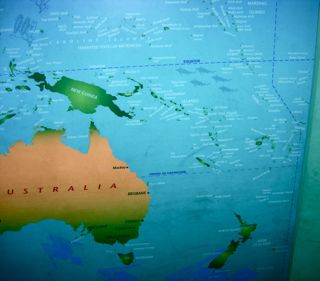
-
| 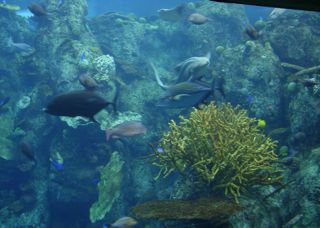
-
|
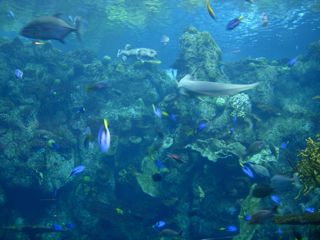
-
| 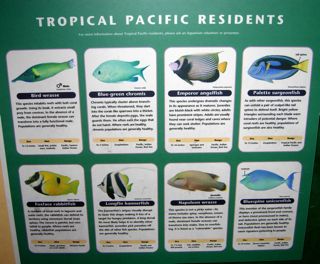
-
| 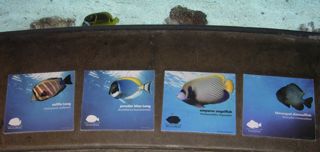
-
|

-
| 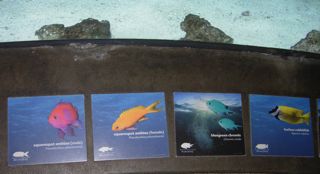
-
| 
-
|
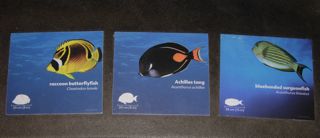
-
| 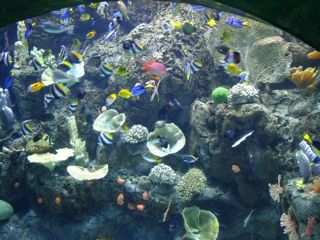
-
| 
-
|
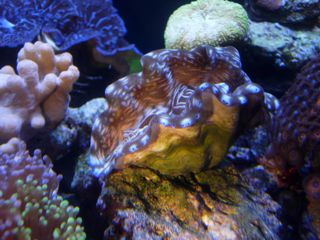
Giant clam (Tridacna sp.)
| 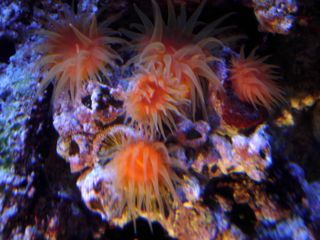
What is this anemone?
| 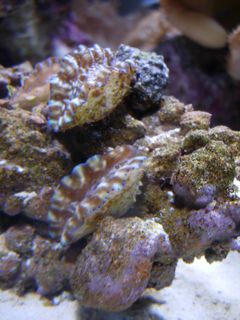
Juvenile giant clams
|
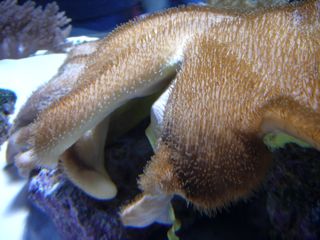
What is this anemone
| 
-
| 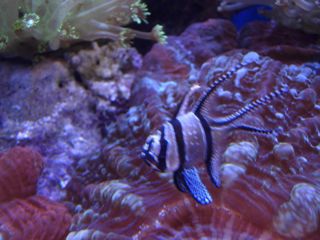
-
|
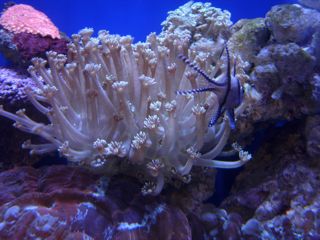
What is this anemone?
| 
What is this fish?
| 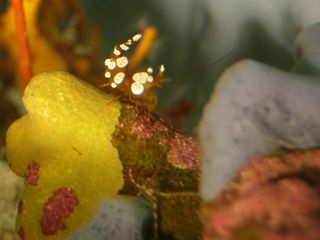
Tentative: Sexy anemone shrimp (Thor amboinensis) is named for its unusually body movements, swaying its abdomen back and forth with flair. They normally are found among anemone tentacles but will scavenge fearlessly for meaty foods.- See here for source.
|
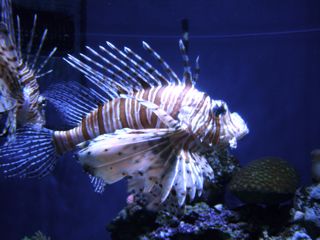
A lionfish is a venomous fish of the family family Scorpaenidae, which includes several genera of similar appearing fishes.
| 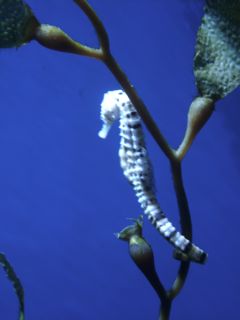
-
| 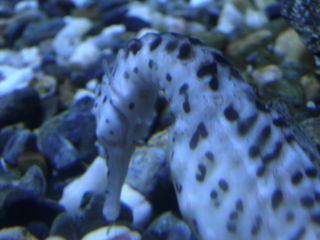
-
|
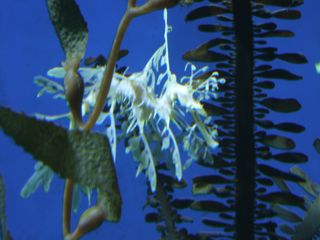
Leafy sea dragon (Phycodurus eques) is native to southern and western Australia
| 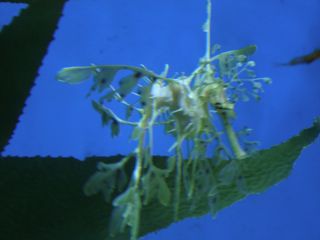
-
| 
-
|
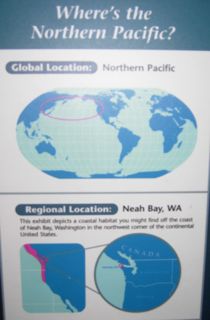
-
| 
-
| 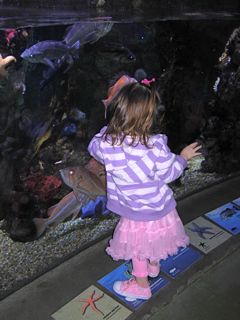
-
|
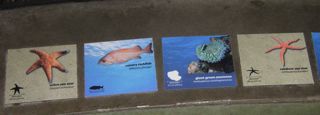
-
| 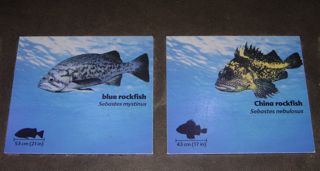
-
| 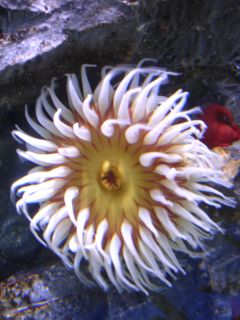
Fish-eating anemone
|

The fish-eating anemone, Urticina piscivora, eats small fishes or shrimps, but the painted greenling (see below) seems to hide among its tentacles similar to how clownfish hide within tropical anemones.
(source) - See here for a study on its feeding and predator-avoidance behavior (it can detach if threatened by the leather seastar, Dermasterias imbricata)
| 
The Christmas or painted anemone, Urticina greybelnyi, is a common northern species often mistakenly referred to as Urticina crassicornis. It is never buried in sand and its column is always free of attached pebbles or shells. - see here for taxonomic details.
| 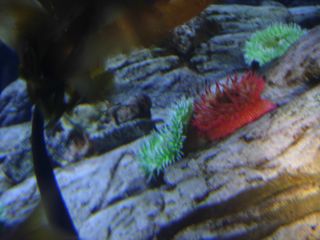
Cribrinopsis albopunctata (formerly Urticina lofotensis or Tealia lofotenis) next to a giant green anemone, Anthopleura xanthogrammica- See here for discussion of the confusing taxonomic history and better images of this very beautiful and common northern sea anemone.
|
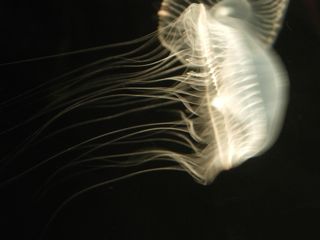
-
| 
-
| 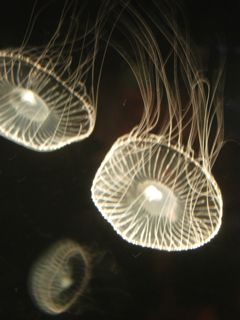
-
|

-
| 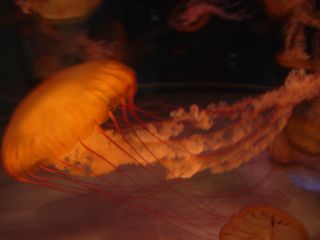
West coast sea nettle (Chrysaora fuscescens)
| 
-
|

-
| 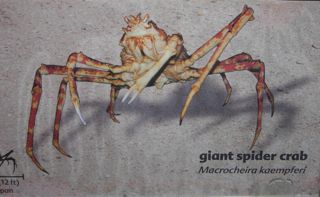
-
| 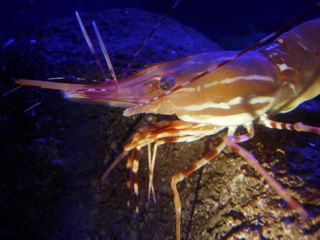
Spot prawn (Pandalus platycerus) is common from Alaska to California, but is in quite deep water (500 to 1600m) in the southern part of its range. - see here
|
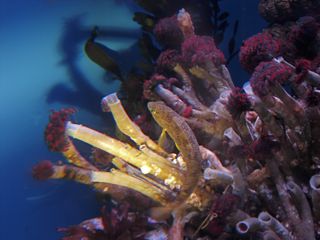
Sabellid polychaetes (Annelida: Polychaeta: Sabellidae)
| 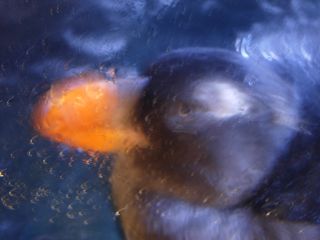
The horned puffins seemed friendly.
| 
Members of the blood star genus, Henricia, are sponge-eating delicate seastars found in temperate or cooler seas worldwide (including deep water). The many West Coast species are the subject of ongoing collaborative studies by Prof. Eernisse.
|
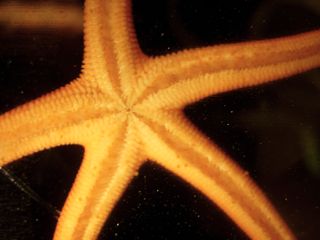
Underside (oral surface) of Henricia sp.
| 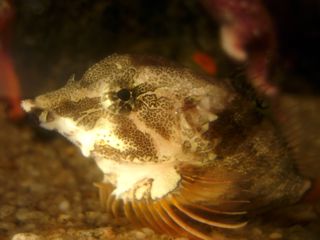
A grunt sculpin, Rhamphocottus richardsonii, is the only species in the family Rhamphocottidae
| 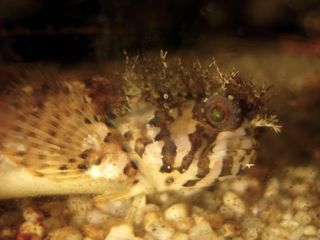
Mosshead warbonnet (Chirolophis nugator) belongs the prickleback family (Stichaeidae). The decorations on its head provide camouflage to its head, which is normally all that is exposed when this fish sits in its normal position, sitting in a crevice, old shell, or bottle.
|
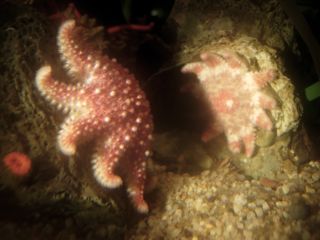
The rose sea star, Crossaster papposus
| 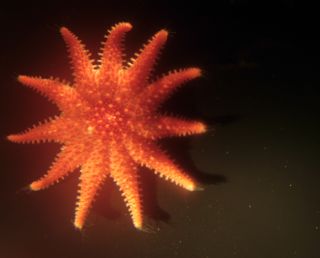
-
| 
-
|
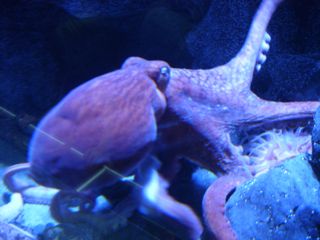
North Pacific giant octopus (Enteroctopus dofleini) is thought to be the world's largest octopus species, with an official record of more than 156 lbs. (71 kg) and an arm span of about 30 feet (nearly 10m). This is the aquarium's only octopus and seemed unusually active on this visit.
| 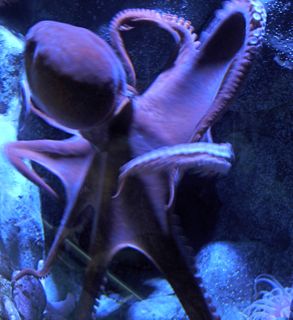
-
| 
-
|

-
| 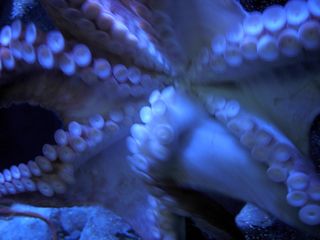
-
| 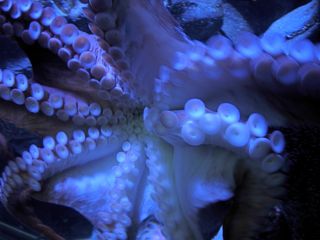
-
|
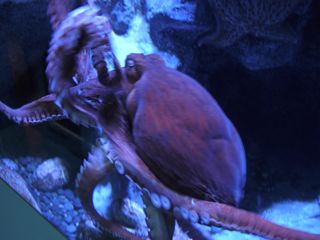
-
| 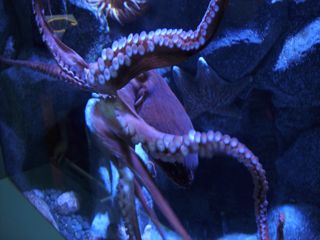
-
| 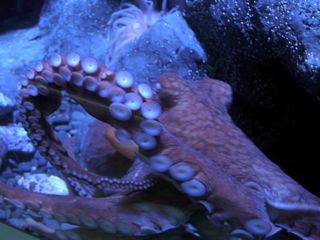
-
|

Grunt sculpin and Henricia sp.
| 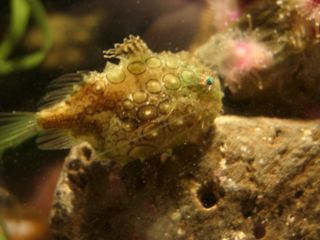
Tentative: Pacific spiny lumpsucker (Eumicrotremus orbis) - see here
| 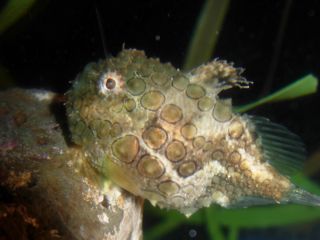
Pacific spiny lumpsucker
|
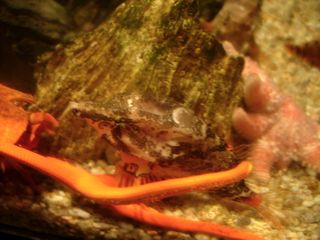
Henricia sp. and a cryptic grunt sculpin.
| 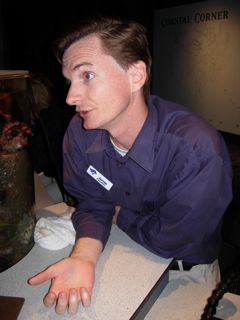
Octopus expert, James Woods, is the new Director of Education at the aquarium, moving to California from Bermuda (hooray!).
| 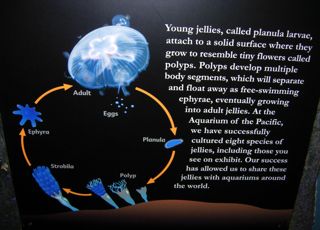
Life cycle of the moon jelly, which is typical for the cnidarian class, Scyphozoa.
|
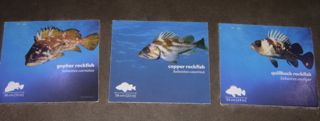
-
| 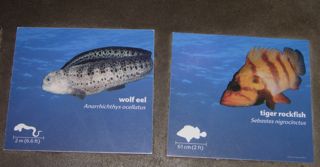
-
| 
-
|
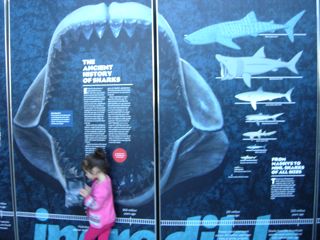
-
| 
-
| 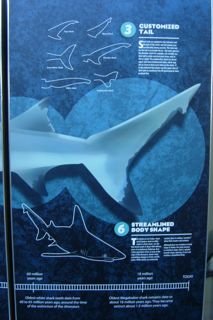
-
|

-
| 
-
| 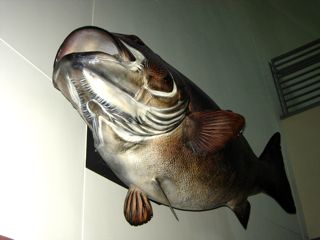
Life size giant sea bass model
|
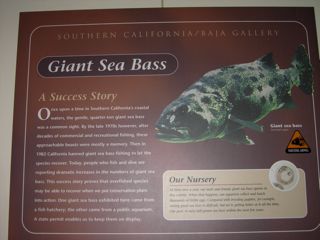
-
| 
Giant sea bass were the largest fish in the aquarium's two-story high fish tank.
| 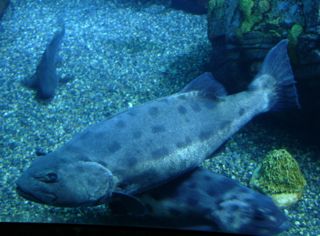
-
|
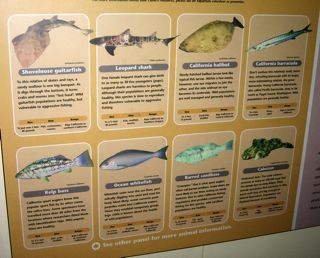
-
| 
-
| 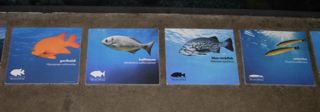
-
|

-
| 
-
| 
The sarcastic fringehead, Neoclinus blanchardi, is a small but extremely aggressive territorial fish that occurs in southern California. It actively defends its burrow. - see here for a cool video
|
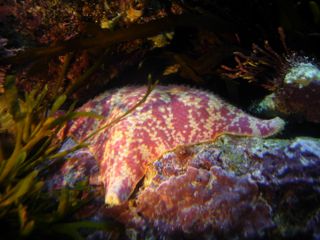
Patiria miniata (bat star)
| 
Tentative: Crevice kelpfish (Gibbonsia montereyensis)
| 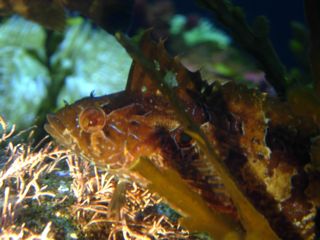
Tentative: Crevice kelpfish (Gibbonsia montereyensis)
|

Painted greeling (Oxylebius pictus)
| 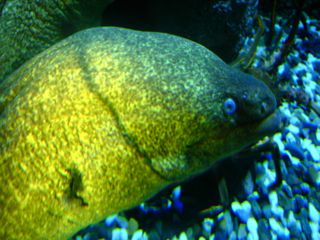
California moray eel (Gymnothorax mordax)
| 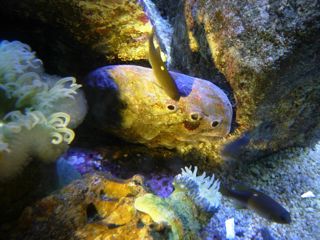
Abalone and California opaleyes (Girella nigricans)
|
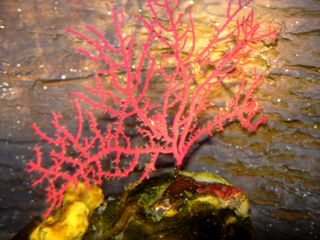
Purple gorgonian
| 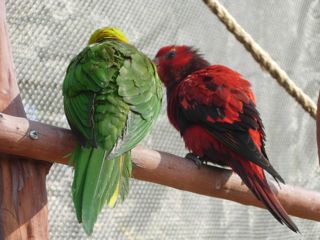
-
| 
-
|
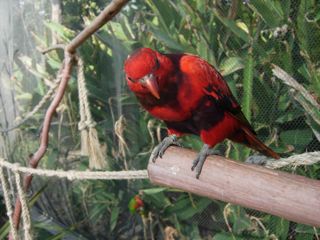
-
| 
The green nape lorikeet, Trichoglossus haematodus haematodus, is among the most common rainbow lorikeet subspecies.
| 
-
|
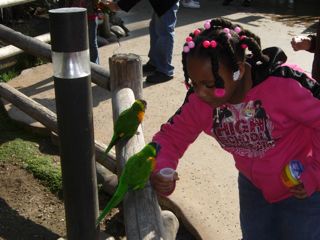
-
| 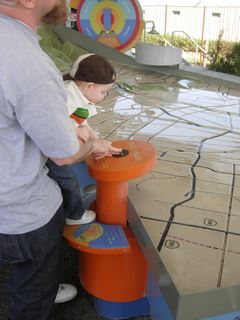
Model of SoCal run-off
| 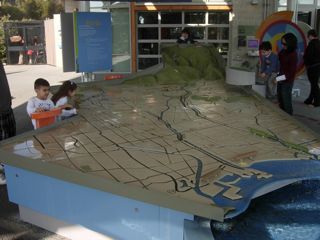
-
|

-
| 
-
| 
-
|
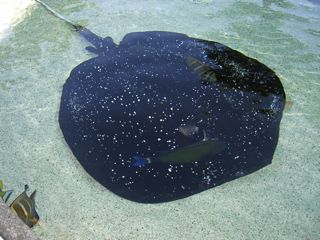
Mangrove ray in the ray touch tank.
| 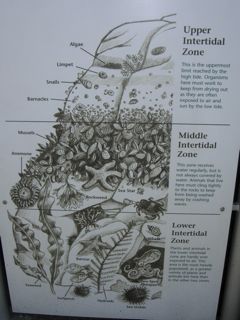
-
| 
-
|

-
| 
-
| 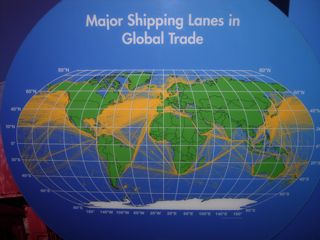
-
|

-
| 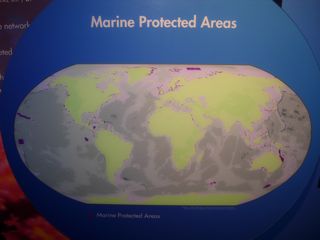
-
| 
-
|
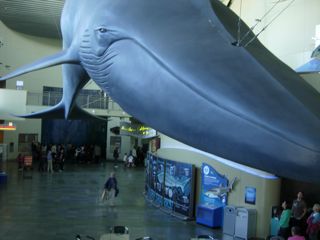
Life-size blue whale model
| 
-
| 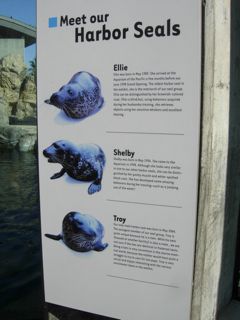
-
|
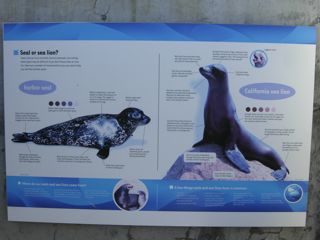
-
| 
-
| 
-
|
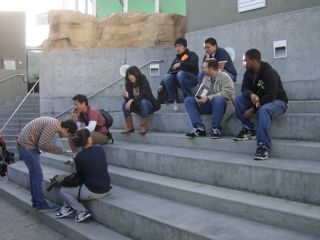
-
| 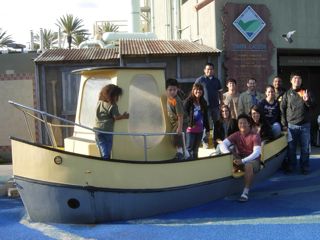
-
| 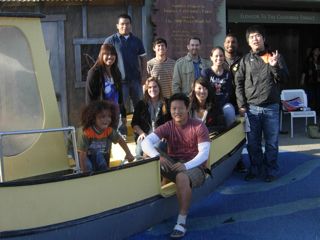
-
|
 Under Construction!
Under Construction! Under Construction!
Under Construction!